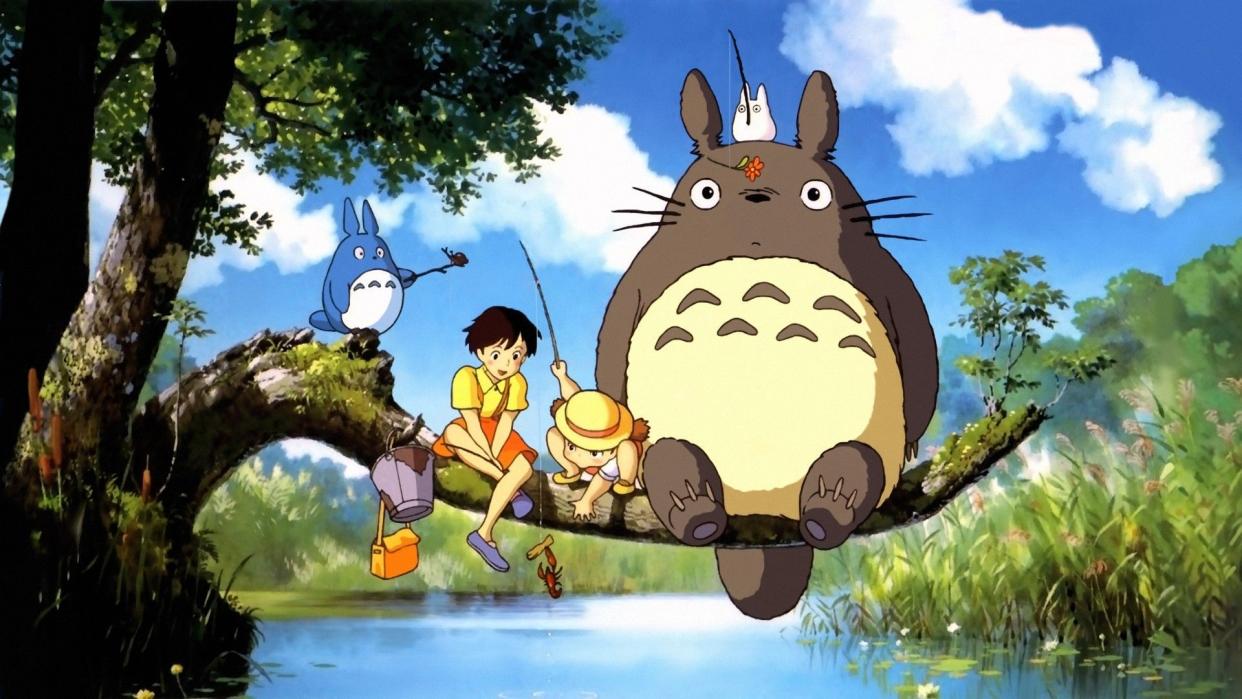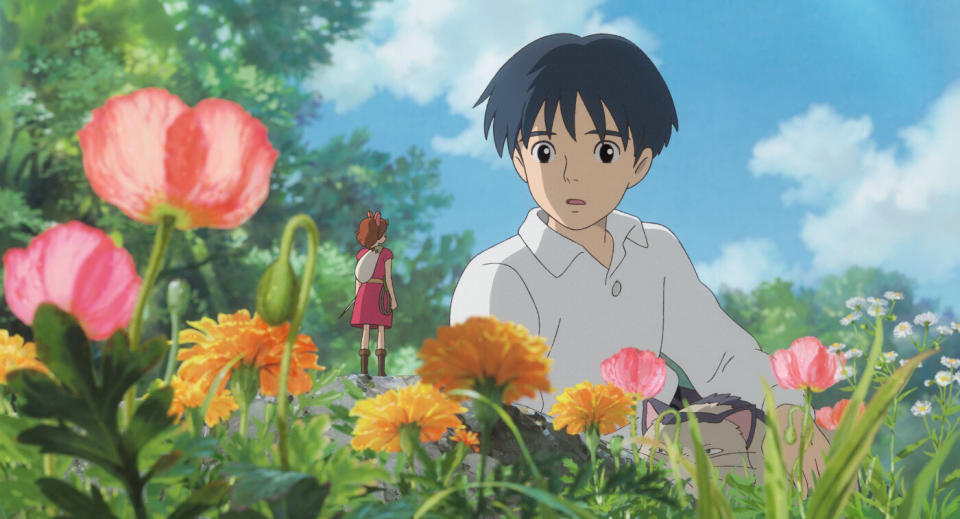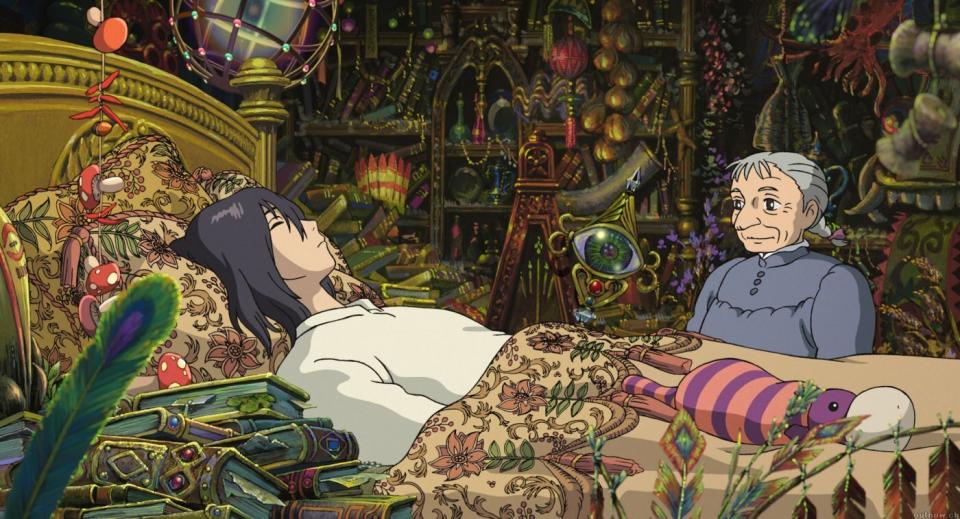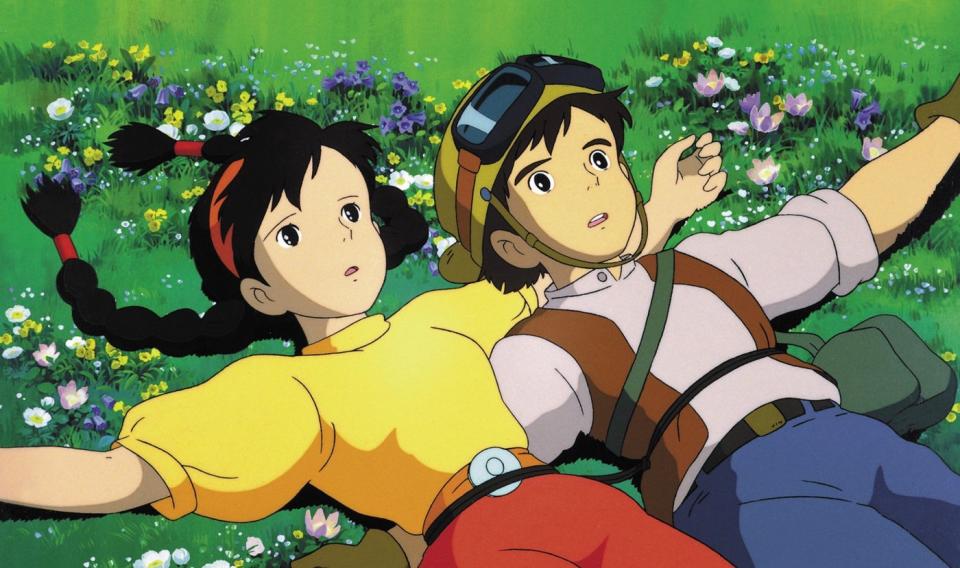The 10 best Studio Ghibli films

Studio Ghibli is often regarded as the ‘Japanese Disney’; both are animation powerhouses, both are beloved by children and adults alike in their respective countries (and globally), and both have produced multiple classics.
Founded in 1985 by directors Hayao Miyazaki and Isao Takahata, and producer Toshio Suzuki, the studio has produced 21 full-length feature films that boast an average of 89% on Rotten Tomatoes, and they’re coming to Netflix in February, 2020.
The movies will be released on Netflix over three months, with the first wave including 1988's My Neighbour Totoro and Kiki's Delivery Service from 1989.
March 1 will see Oscar-winner Spirited Away from 2001, often named as one of the best animated movies of all time, and Oscar-nominated The Tale of The Princess Kaguya from 2013 among the second wave.
Read more: Movies to re-watch immediately
Then a third wave arrives on 1 April, including Howl's Moving Castle, Ponyo, The Wind Rises and 2014's When Marnie Was There, the most recent movie from the studio.
Despite many of the films having fantastical elements, all are rooted in immersive realism, and the characters are fully formed with understandable motivations. This is all coupled with the fact that the vast majority of Studio Ghibli films only use hand-drawn animation.
Also the films have been lauded for their portrayals of women, Miyazaki himself has described his female characters as "brave, self-sufficient girls that don't think twice about fighting for what they believe in", and that they may "need a friend, or a supporter, but never a saviour".
Here’s my personal choice for the studios ten best films, comment below on what your favourite is:
10) Ponyo (崖の上のポニョ) - 2008

Ponyo is a goldfish who longs to be human after being rescued by Sosuke, a five-year-old boy. The daughter of a masterful wizard and a sea goddess, she uses her father's magic to transform herself into a young girl, but this causes a dangerous imbalance in the world.
Miyazaki was intimately involved with the hand-drawn animation in Ponyo. He preferred to draw the sea and waves himself, and enjoyed experimenting with how to express this important part of the film. The level of detailed drawing present in the film resulted in 170,000 separate images, a record for a Miyazaki film.
9) The Secret World of Arrietty (借りぐらしのアリエッティ) - 2010

Adapted from The Borrowers by Mary Norton, Arrietty is about a young boy who discovers the existence of the four-inch-tall Clock family who live beneath his floorboards and ‘borrow’ objects for them to use. He strikes up an unlikely friendship with the daughter Arrietty, but danger lurks in the form of the housemaid Haru.
Cristoph Mark of The Daily Yomiuri praised the film, calling it "likely a perennial favourite among children", and particularly liked the film effects, which he described as "Drops of water loom large and drip like syrup; the ticking of a clock reverberates through the floor and the theatre's speakers; tissue paper is large and stiff ...", adding that these effects gives the audience "a glimpse into their own world, but from a different perspective".
Read more: Elsa explores her dangerous power in 'Frozen 2' trailer
8) Kiki’s Delivery Service (魔女の宅急便) - 1989

Kiki, a witch-in-training, is 13 years old, and according to tradition, all witches of that age must leave home for one year. Kiki, along with her talking cat Jiji, fly away to live in the seaside town of Koriko. After starting her own delivery service (using her broom as the delivery vehicle), she must learn how to deal with her new life, especially after she loses the ability to fly.
A charming coming-of-age story, whilst it may have been marketed towards children, adults will undoubtedly find appeal with the world that is presented.
7) Howl’s Moving Castle (ハウルの動く城) - 2004

A young hatter called Sophie is cursed by the Witch of the Waste, turns into an old woman, and is unable to tell anyone of her plight. Incapable of continuing her job at her mother's hat shop, she goes to the ambulatory castle of the notorious wizard Howl and becomes part of his household. All the while, the threat of war is imminent in the background.
As with many of Miyazaki’s films where he takes inspiration from British writers, this time he found the story in Diana Wynne Jones’s book of the same name. In this film there are many anti-war themes, influenced by Miyakazi’s distaste of the 2003 Iraq War, and therefore he decided to make a film that could potentially be poorly received in the US.
6) My Neighbour Totoro (となりのトトロ) - 1988

Two girls, 10-year-old Satsuki and her four-year-old sister Mei, move into a house in the country with their father to be closer to their hospitalised mother. They discover that the nearby forest is inhabited by magical creatures called Totoros. They soon befriend these animals, and have several magical adventures.
A film with no villains, no evil adults, not even major fighting between the two sisters, it is a sweet benign world where the fantasy of children take flight.
Acclaimed film critic Roger Ebert said: “It is a little sad, a little scary, a little surprising and a little informative, just like life itself. It depends on a situation instead of a plot, and suggests that the wonder of life and the resources of imagination supply all the adventure you need.”
Totoro has also become the official logo of Studio Ghibli.
5) Laputa: Castle in the Sky (天空の城ラピュタ) - 1986

A young boy stumbles into a mysterious girl who floats down from the sky. The girl, Sheeta, is being chased by pirates, the army and government secret agents. In saving her life, they begin a high flying adventure, all the while trying to unlock Sheeta's connection to a floating castle of a lost civilisation.
Although Nausicaä of the Valley of the Wind is often thought to be the first Studio Ghibli film, its director Hayao Miyazaki didn’t create the studio until after its completion, therefore this is the studio’s first official film.
It is also considered a milestone in the steampunk genre, and has been called "one of the first modern steampunk classics."
4) Grave of the Fireflies (火垂るの墓) - 1988

Set in the city of Kobe, Japan, the film tells the story of two siblings, Seita and Setsuko, and their desperate struggle to survive during the final months of the Second World War.
Often placed on the list of greatest war films ever made, for people brought up on the idea that animation is just for children and end with a happily ever after, it may come as a shock to see it used for such a mournful narrative.
Nowadays, the word ‘heartbreaking’ is causally tossed around in clickbait headlines, but this story is truly heartbreaking, not just because of the animation, but because it can apply to any children who are victims of war.
It is a film that can only be viewed once.
3) Princess Mononoke (もののけ姫) - 1997

While defending his village, young prince Ashitaka is struck with a deadly curse and must set out to find a cure. Along his travels he finds himself caught between a war Lady Eboshi and her townspeople, who fire guns at the gods of the forest, and a brave young woman, Princess Mononoke, who was raised by a wolf-god.
It could be summed up simply as a man vs nature battle. However, as with all Studio Ghibli films, there are more complex issues at stake.
Billy Crudup, who provided the English voice for Ashitaka, said "The movie was such an entirely different experience; it had a whole new sensibility I had never seen in animation. It also had something profound to say: that there has to be a give and take between man and nature. One of the things that really impressed me is that Miyazaki shows life in all its multi-faceted complexity, without the traditional perfect heroes and wicked villains. Even Lady Eboshi, who Ashitaka respects, is not so much evil as short-sighted."
The studio’s “no cuts” policy was highlighted when Miramax’s then co-chairman Harvey Weinstein suggested editing Princess Mononoke to make it more marketable. A Studio Ghibli producer is rumoured to have sent an authentic Japanese sword with a simple message: "No cuts".
2) The Tale of Princess Kaguya (かぐや姫の物語) - 2013

Directed by Isao Takahata, it is based on the 10th-century Japanese prose ‘The Tale of the Bamboo Cutter’. It was his final film for Ghibli before his passing in 2018.
One day, an elderly bamboo cutter and his wife find a baby inside a shining bamboo stalk, who grows up rapidly into a beautiful young lady. Tales of her beauty spread, and soon she has a number of marriage proposals from high-ranking lords to princes, even the emperor. But all she longs for is the simplicity of her childhood.
Despite being set in ancient Japan, The Tale of Princess Kaguya will resonate with audiences everywhere as the central themes of the film deal with belonging and fighting for your freedom.
It is stylistically different from other Studio Ghibli as it was painted with watercolour and drawn as if with traditional ink brushes, to reflect the origins of the story.
And finally...
1) Spirited Away (千と千尋の神隠し) - 2001

At the top of the list there can be no other film but Spirited Away. The film is often credited for bringing Studio Ghibli to the forefront of western audiences, as it was the first non-western film to win the Oscar for animation.
The film centres on Chihiro, a 10-year-old girl who is angry that her parents have taken her away from friends to go and live in the countryside. However, when they end up getting lost, the family decides to explore an apparently abandoned ‘theme park’, and Chihiro inadvertently wanders into a world ruled by gods, witches, and spirits, and where humans are changed into beasts.
The story acknowledges mature themes such as loss, grief, identity, and much more while never deviating from its child-like wonder at the fantasy world of spirits and demons. Perhaps what makes this so enjoyable and different from other animations is that there is no one ‘evil’ character, only bad moments that happen, which serve to teach Chihiro valuable life lessons.
Every element works perfectly together; the stunningly crafted animation, the fantasy world, Chihiro’s own character development from a sullen girl to someone with a deeper understanding of human life.
This is all aided by the soaring music of Joe Hisaishi, a long time collaborator of Miyazaki, who skilfully tells the story musically (a personal favourite is “Dragon Boy”).

 Yahoo Movies
Yahoo Movies 

